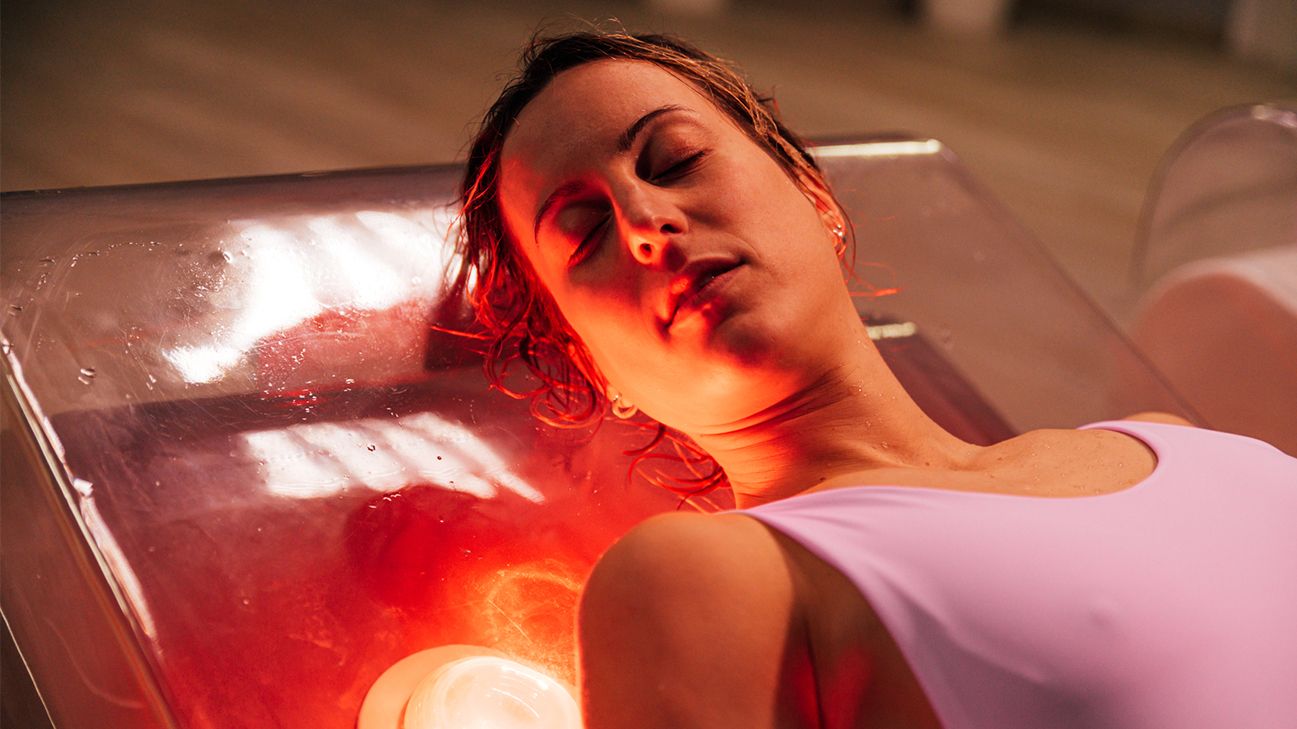Psoriasis has no cure (yet!), but people with this condition often find relief from a combo of medications and home remedies. One treatment option? Red light therapy.
If basking in the glow of red lights sounds like a hokey way to treat a very real, very challenging condition, we get it. That’s why we dug into the research to illuminate the science behind red light therapy and how it’s used for psoriasis.
Short answer: Yes, but results may vary.
Red light therapy 101
While the mechanism is still a bit mysterious, red light therapy (RLT) is thought to work like this:
- Skin is exposed to red-light-emitting diodes (LEDs) said to be 10 times brighter than sun rays.
- Skin cells’ mitochondria — the microorganisms that help transform nutrients into energy — absorb the light.
- Energized by the light, skin cells replenish and heal.
Sci-Fi as it sounds, RLT’s effects have been promising for several skin probs, including:
- acne
- redness and bruising after cosmetic treatment
- demodex folliculitis
- actinic keratosis (precancerous patches from sun damage)
- wrinkles
- and, yes, psoriasis (🎉!)
Deep dive: What the research says
Researchers have given a tentative recommendation for LED-red light as an “emerging” treatment for psoriasis. That’s because results are promising, but more studies are needed.
A 2017 research review suggested that certain wavelengths of red light work against plaque psoriasis. People with plaque psoriasis were able to clear 60 percent to 100 percent of their skin with 2 red light sessions a week for 4 to 5 weeks.
One small 2011 study pitted RLT and blue light therapy (BLT) against each other. Folks with psoriasis received high doses of light therapy three times a week for 4 weeks. They also applied 10-percent salicylic acid to their plaques during that time.
The conclusion? Both RLT and BLT improved scaly, thickened skin. But the blue light also relieved redness.
tl;dr
RLT performed in a medical setting has been known to clear up psoriasis flares. But more research is needed to confirm it as a reliable remedy for all types of psoriasis.

You can totally test-drive RLT with or without a trip to the doctor.
Red light devices are available for purchase online or for a fee at your neighborhood tanning salon or day spa. But remember, these products and services exist for cosmetic purposes. They might not be strong enough or targeted enough to relieve psoriasis symptoms.
The limited studies involving RLT for psoriasis include:
- specific wavelengths
- several sessions
- in some cases, a combo of meds + RLT
Bottom line: You’re more likely to see results with targeted, high dose RLT in a medical setting.
RLT = a noninvasive, drug-free skin treatment. It’s also UV-free. Basically, it doesn’t seem to have any side effects.
The National Psoriasis Foundation also says light therapy is safe.
Still, here are some tips to dial down the chances of a bad RLT experience:
- Protect your eyes. Yep, these lights are bright. Shield your peepers from any lasers or lights.
- Share your med list. Some prescription medications make your skin more sensitive to light. Tell your healthcare professional if you’re taking any of these meds.
- Call a medical professional. RLT from a dermatologist or other medical practitioner improves your odds of safe, effective treatment. Your doctor can also help you pinpoint the best light therapy for you (it might not be red!).
- Prepare to see it through. RLT costs a pretty penny. You’ll need several sessions to see a difference, so make sure you have the time and money to achieve results.
What about blue light therapy for psoriasis?
Remember that 2011 study? It found that BLT reduced psoriasis-related:
- scaly skin
- thickened skin
- redness
A wearable blue light device has even been approved for use at home by some folks with mild to moderate plaque psoriasis.
RLT, BLT, and some other light therapies have all been used for psoriasis. Only a doctor can help you figure out which one is best for you.
Folks turn to RLT for many reasons, mostly skin-related. Researchers report promising results for RLT’s effects on…
- Wound healing. Research involving animals revealed that red light lasers could shrink wound sites by a whopping 36 percent. Of course, we need more studies involving humans to confirm.
- Inflammation. Yep, RLT can help soothe redness and swelling from inflammation.
- Hair loss. RLT + infrared laser treatment = hair growth in folks with alopecia, a condition characterized by baldness and patchy hair.
- Body contouring. Some pretty inconsistent research suggests that RLT can blast away fat, promoting weight loss.
- Chemo-related mouth sores. Research suggests that even one dose of RLT can help prevent mouth lesions from chemotherapy.
Red light therapy (RLT) is a noninvasive treatment used for skin health concerns ranging from acne to surgical wounds. Research suggests that it can also help reduce the spread and severity of plaque psoriasis.
RLT alone is unlikely to eradicate plaques, but it’s a useful tool in your arsenal against flare-ups.
Since RLT is considered safe, there’s not much risk in giving it a try. But you’re much more likely to see results from a medical facility instead of from a wellness spa. That’s because evidence-backed RLT uses super high, targeted doses of light.
If you’re looking into RLT because psoriasis is interfering with your daily life, take heart. There are effective treatments and treatment combinations out there. Talk with your doctor to figure out which methods are best for you.
